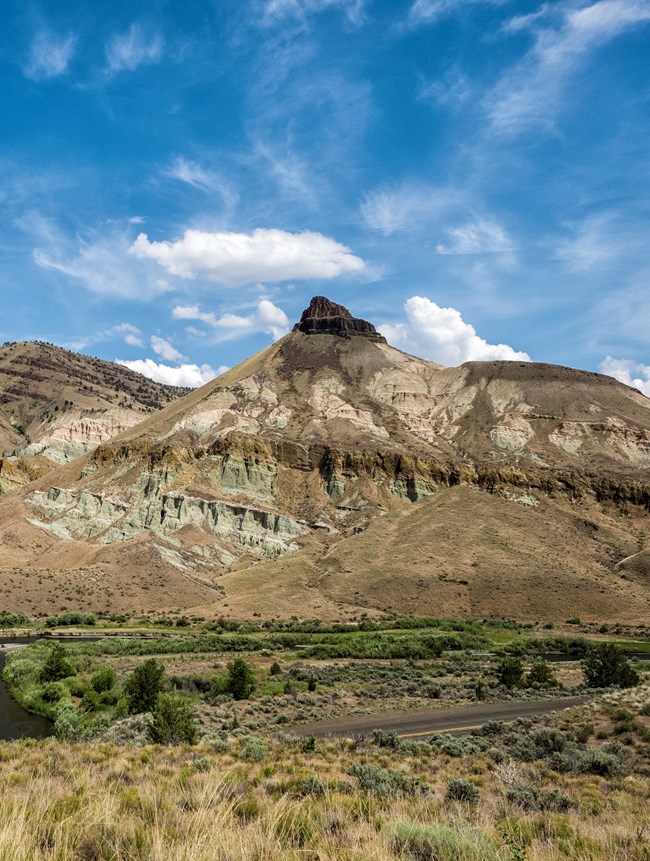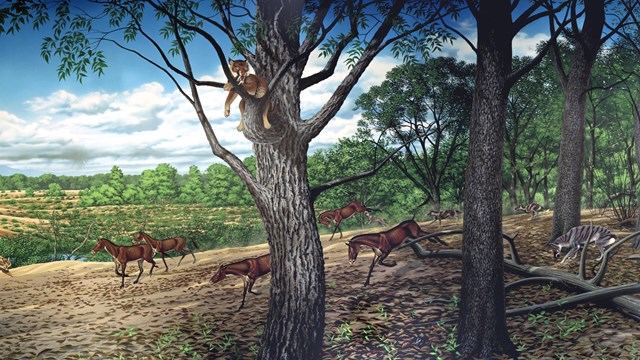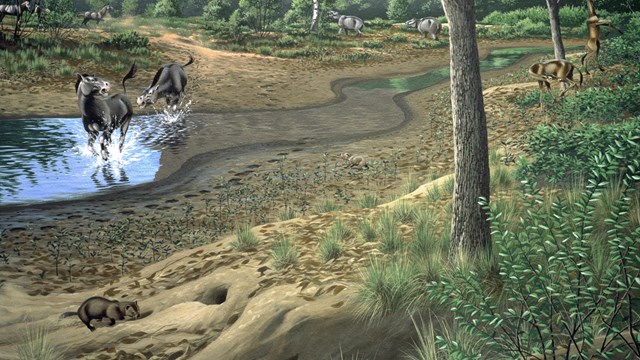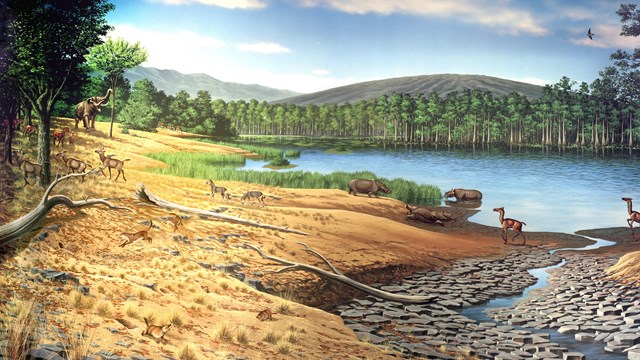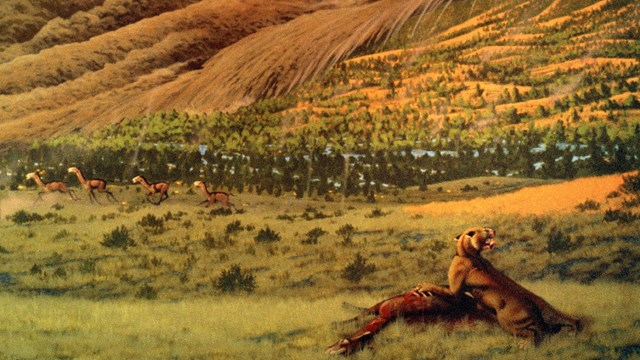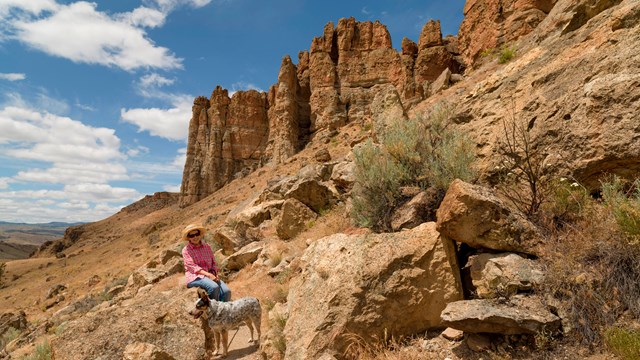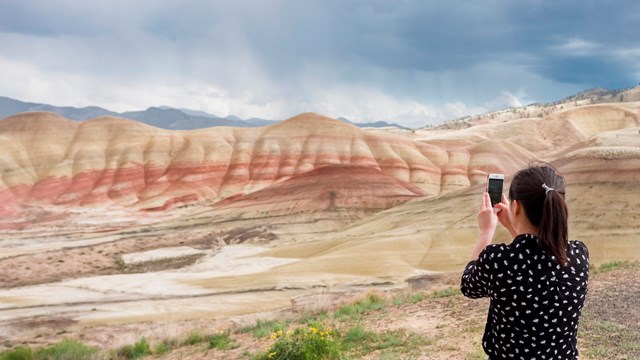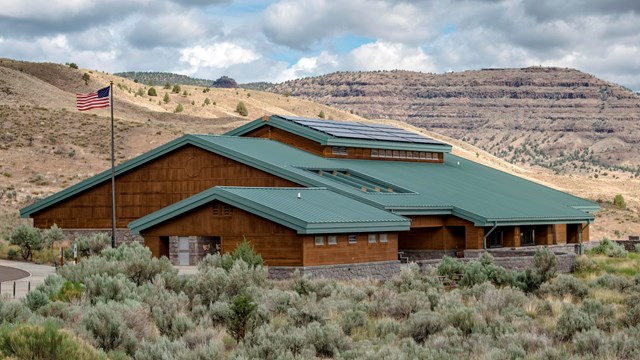Trip Planning
The Sheep Rock Unit is located at 32651 Highway 19, Kimberly, OR 97848, between the towns of Kimberly and Dayville, Oregon. Prominent, non-fossil bearing rocks date back as far as 95 million years old. Fossils of plants and animals are found in a number of geological layers dating from 33-7 million years ago. |
Last updated: September 21, 2025

